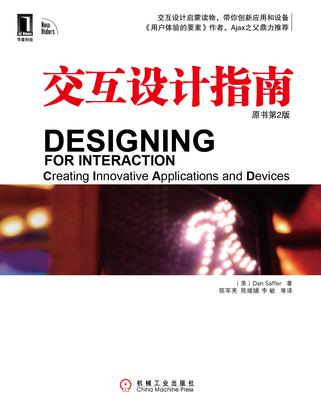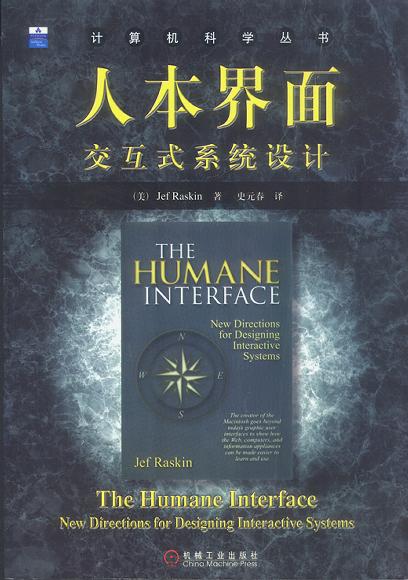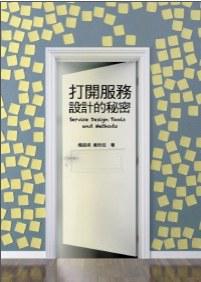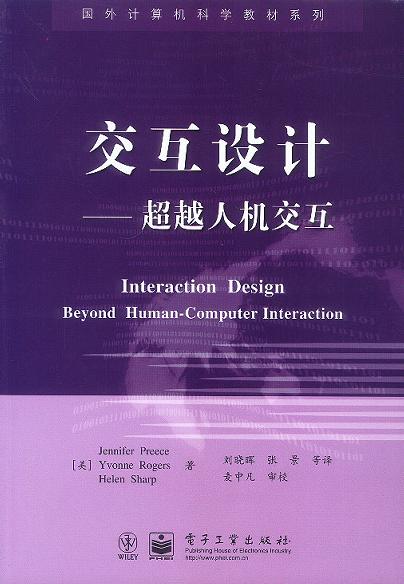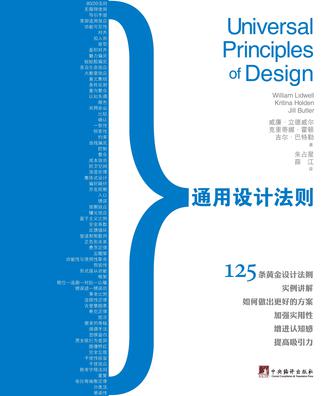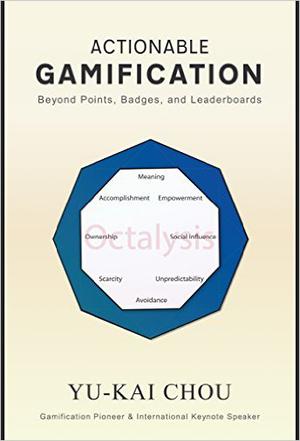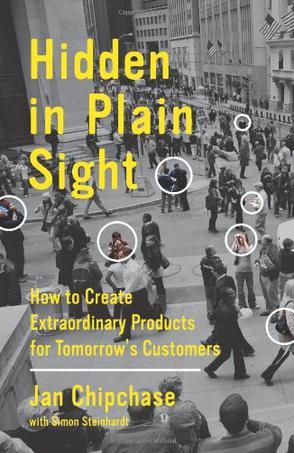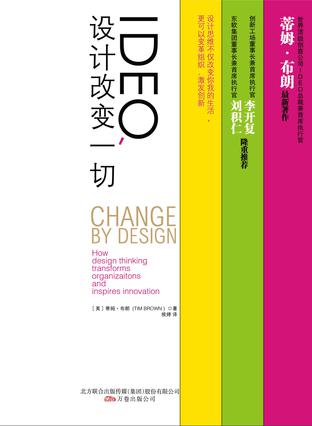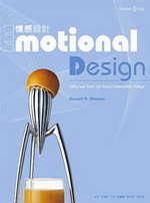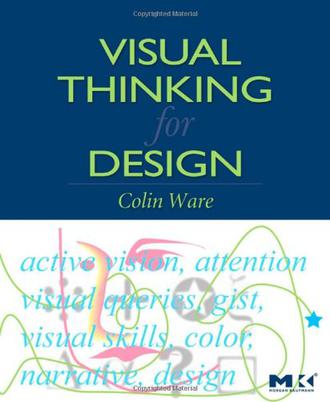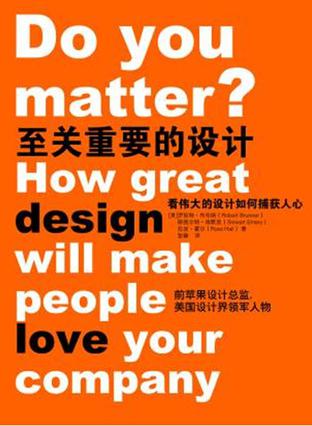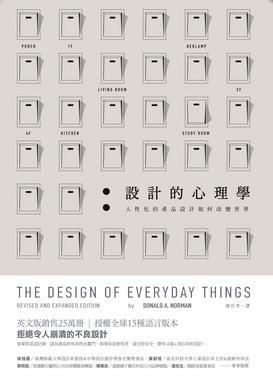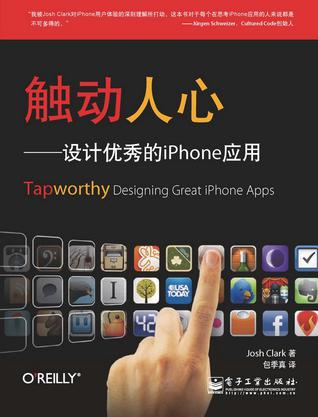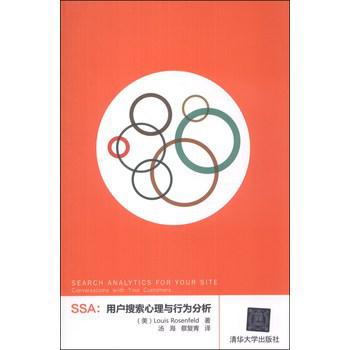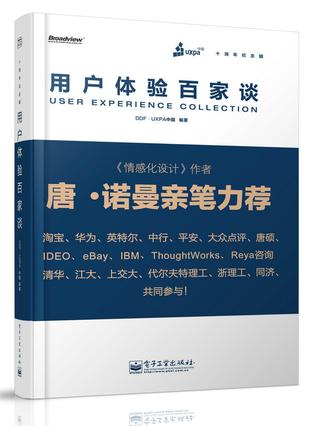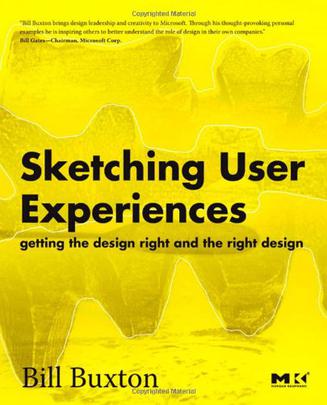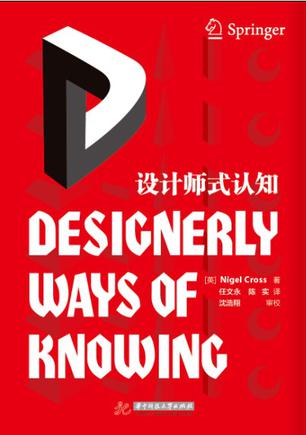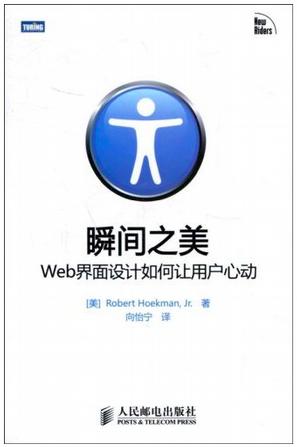欢迎来到相识电子书!
标签:交互设计
-
重塑用户体验
本书为用户体验过程提供了一种易于传承的导览——从定义用户需求到实际的设计、模型制作以及最终的评估。 卓越的用户界面设计并非仅仅与美学有关,也不只是使用最先进的技术——设计师还必须确保他们设计的产品能够提供一种令人意想不到的用户体验。这就需要经历用户需求分析、可用性测试、人物角色创建、原型化、设计草图绘制和最终产品评估的完整过程。 本书汲取了YMorgarl Kaufmann出版公司交互技术系列最畅销书中久经考验和最可信赖的精华部分,并以一种典型的项目结构展现给大家。ChaunceyWilsorl带领每位读者穿越各个章节,引领每一阶段,解释其中的情境,着重阐述它们在用户体验生命周期中的重要意义,为读者提供了创建有用、易用和人们实际想用的网页与网站的实用操作指南。 -
交互设计指南
本书对交互设计的来源和本质作了很好的介绍。书中包含了作者十多年来对交互设计的一些深刻理解,对如何做好交互设计有很强的实践价值。在本书第3~8章中,贯穿了一个能够广泛应用于各种项目的通用设计流程,能够帮助新手设计师按序将所有信息应用于实践。书中还有一些对交互设计领域的开创者和名人的访谈,可以让我们从多个角度对交互设计有一个深刻全面的认识。本书主要涉及数字产品如何工作的知识,不包含任何程序代码,基本与平台无关。 本书的针对对象既包括那些刚刚起步的新手设计师,也包括那些期望改进设计流程或增加设计工具的资深设计师。 “构建与人们进行交互的产品和服务是21世纪的重大挑战。Dan Saffer做了一项了不起的工作,他把凌乱的知识整理成了一本可理解的、有序的、任何想创建新设计的人必备的参考书。” ——Jared Spool,User Interface Engineering的CEO “《Designing for Interaction》是有见识的、智慧的和激动人心的。Dan Saffer 给当今的交互设计挑战提供了实用建议,并且针对未来的交互设计提出了明智见解。” ——Jesse James Garrett,《用户体验要素》的作者 -
人本界面
如果我们想克服目前人机界面上的固有缺陷,就很有必要理解本书的教义;若无此愿望,读读也无妨。交互设计的许多重要方面此书并没有包括在内,因为许多文献中都已经有详尽的阐述。本书的意图是补充现有的界面设计的方法或预测未来。 本书概述了人机界面设计领域的研究成果,详细论证了界面设计思想应以认知学为基础,并考虑人类的心智特点,在指出当前界面设计中弊端的同时,提出了新产品开发的思路。本书集计算机科学、人体工程学、心理学多种学科的内容于一身,是界面开发人员及相关研究者不可不读的一本好书。在本书中,我们可以看到“以人为本”已经不只是一种人机关系的理想,而是可以体现在界面以及相关软硬件技术上的具体设计原则和实现方法了。 -
打開服務設計的秘密
◎這是一本專為您個人及企業打造的工具書 您是否正在不斷地尋求組織創新思考的方法? 打造顧客整體消費體驗的方式?技術創新應用的可能性? 產品與服務創新模式與工具?或是一套創新的企業營運模式? 本書在過程中將會分享服務設計各個階段常用的工具,並說明使用時機與相關技巧。企業可以依照需求的不同彈性搭配使用,成為專屬獨一無二的服務創意加值工具書! -
通用设计法则
*为所有设计师提供的一站式参考书与资源宝典 *详解常用设计概念,配以图示实例 *跨学科跨领域的设计思想、解决方案与创新思维 *涵盖平面设计、建筑设计与用户界面设计各领域核心理论 不论是举办营销活动、设计海报、筹划博物馆展览、设计计算机游戏,还是更复杂的控制系统的设计,我们看到的 最终设计作品实际上是诸多设计领域里的概念与实践的融合。直到今天,仍然没有人能做到对这些领域全部精通,因此设计师要设计一个作品,就要在各领域不断搜寻和借鉴。 而本书是第一部跨越各专业领域的设计著作,图片丰富,使用方便。用清晰易懂的语言解说设计概念,且配有将概念用于实践的图示实例。从“80/20法则”、“意元集组”、“娃娃脸偏见”、“奥卡姆剃刀”、“自相似性”到“讲故事”等通用法则。读者可从这125条法则中,快速地吸收宝贵经验,避免致命错误,开启更多、更好的沟通与创意。 这本重要的设计法则书,是设计师、工程师、建筑师,以及正在学习设计专业的学生的必备工具和实用宝典。任何一个读者都可以通过这本书看懂设计的门道,培养出判断“好设计、好物件、好视觉如何好”的眼光与能力。 自2003年初版以来,受到全世界三十多个国家近百万读者的信赖。这是十年来首次更新的版本,对第一版的内容的进行了大量的充实与修改,新增了25条法则。 本书官网:www.universalprinciplesofdesign.com -
Actionable Gamification
The new era of Gamification and Human-Focused Design optimizes for motivation and engagement over traditional Function-Focused Design. Within the industry, studies on game mechanics and behavioral psychology have become proliferate. However, few people understand how to merge the two fields into experience designs that reliably increases business metrics and generates a return on investment. Gamification Pioneer Yu-kai Chou takes reader on a journey to learn his twelve years of obsessive research in creating the Octalysis Framework, and how to apply the framework to create engaging and successful experiences in their product, workplace, marketing, and personal lives. "Yu-kai is at the cutting edge of the field of behavior design." -Nir Eyal, Best Selling Author of Hooked: How to Design Habit-Forming Products "Yu-kai's Octalysis framework brilliantly explains the intricate relationships between human behaviors and their inner drives. Accompanied by numerous application examples, Octalysis is the turnkey for gamification in any product and service design." -Dr. Jianming Dong, Chief User Experience Architect, Huawei Yu-Kai is the real deal. His experience, expertise and passion make this a must read for those looking to grasp the possibilities available through applied gamification. --Jeff Gates, former counsel to U.S. Senate Committee on Finance and author of The Ownership Solution, Democracy at Risk, Guilt By Association. Yu-kai's Insights were instrumental in helping Lucky Diem supercharge our client La Quinta's bookings per user by 206% and incremental revenue per user by $157 (132% Lift) against the control group. Being able to achieve a viral coefficient of 530%, I would recommend any business to work with Yu-kai and learn his Octalysis Framework. --Andrew Landis, Founder & CEO of Lucky Diem Yu-kai's reputation precedes him in the field of gamification. His Octalysis framework is both elegantly simple and intricately complex. His book is not only extrinsically rewarding to read, but intrinsically motivating to apply; it s wickedly effective, and yet divinely true. Octalysis brilliantly unified all these seemingly conflicting aspects of gamification into a single cohesive framework with a hidden twist in the middle of it it s sensational. --Michael Wu, Chief Scientist of Lithium -
Hidden in Plain Sight
Who are your next customers - not just the ones you are serving today but the ones you'll need three, five, ten years from now? How do you figure out what goods and services will attract them in the future? How do you figure this out ahead of your competitors? According to globe-trotting innovation expert Jan Chipchase, most of the clues are right in front of us, hidden in plain sight. The key is learning to see the ordinary in a revolutionary new way, to see beyond what people are doing to understand why. As Executive Creative Director of Global Insights at frog design, an award-winning global design and innovation company, Chipchase shows us how to see the world differently, drawing on the everyday from making a phone call, to filling up a gas tank through to ascertaining whether its half and half you are pouring into your coffee. He's eternally looking for opportunities-gaps, anomalies, and contradictions-that will give his clients, some of the world's largest companies, a distinct competitive advantage, whether they're delivering the most low-tech bar of soap or through to the most high-tech wireless network. In "Hidden in Plain Sight", Chipchase takes readers on his journeys across the globe, sharing his methods for identifying unmet customer needs. No matter where he stops-whether Kabul or Cleveland-Chipchase's goals are the same: to spot and decode the routines of daily life and to help readers use the very same tools that he and his team use to see - and capitalize upon - what is hidden in plain sight today to create businesses tomorrow. -
IDEO,设计改变一切
IDEO总裁兼首席执行官蒂姆•布朗 最新著作 创新工场董事长兼首席执行官 李开复 隆重推荐 这不是写给设计师看的书,是为追求设计思考的组织及个人打造的蓝图,协助将设计思考这种以创意解决难题的做法,带进生活、组织、产品和服务,为社会整体和企业发掘新的替代方案。 设计思考的价值不只局限在创意产业,或负责产品设计的工作者。事实上,用设计思考来解决需要多方考虑的抽象问题时,往往能发挥强大的功效,例如提升顾客对旅馆的经验感受,鼓励银行客户存更多钱,或为公益广告铺陈感动人心的叙述。设计思考的应用范围不断扩大,以解决各样的议题与关怀,从如何在开发中国家递送干净的饮水,到如何提升机场维安和微额融资的效率等等。 在书中,享誉国际的创新设计公司IDEO总裁蒂姆•布朗,带领我们认识“设计思考”。这本洋溢着活力、能够启发灵感的指南,是每位迎接今日挑战以创造明日机会的人不可或缺的宝典。 -
情感設計
你可曾疑惑為何便宜的葡萄酒倒在別緻的玻璃酒杯中,品嘗起來就特別美味?或是為什麼洗過的車或打過蠟的車感覺特別好開?新的研究顯示,有吸引力的東西的確會比較好用。 在過去十年間,設計傾向讓產品容易使用,其中有一大原因歸於 Norman 開創性的言論《設計心理學》(The Design of Everyday Things)。但當他在《情感設計》(Emotional Design) 這本迷人的新書中詳細的論證之後,我們不只是在用產品而已,我們的情感已經深深地介入這個活動了。這本書首次論證了這個看起來似乎很簡單的概念所帶來的深遠影響。 每次當我們接觸到一個東西,決定我們反應的不單是它有多好用,還包括它有多好看、有沒有忠實地反映我們的形象,或甚至喚起我們的懷舊之情。當一個產品在美學上令人愉悅且符合自己或社會的價值觀,我們就會以正面之情看待它,這就是為什麼即使便宜的電子錶也可以精確地讀出時間,仍有人願意花大把鈔票去買一隻昂貴的手工錶。 然而消費者如何體驗產品還只是本書其中的一環;情感在設計師的工作中也扮演了極重要的角色。愉快的心情會增加創意;焦慮的狀態會提昇注意力。不管是設計機器人或辦公空間、果汁機或捷豹汔車,設計師總在正面與負面的感覺中來回波動,而且他們的作品證明了這些情緒的影響。此外,這個觀點更進一步拓展了未來的設計:如果我們製造出來的東西可以感知我們的情緒狀態會如何呢?又要如何加強我們與它們之間的互動呢? Donald Norman 陳述了這些以及更多其他鼓動人心的議題--利用豐富的案例和科學上最新的見解,大膽的探索我們日常生活中會帶來情緒影響的物品。他的暢銷書《設計心理學》顯示了為什麼我們使用的產品不應該讓人困惑、惱怒,還有沮喪,《情感設計》則解釋了為什麼它們也必須迷人、愉悅,以及充滿樂趣。 -
Visual Thinking
Increasingly, designers need to present information in ways that aid their audiences thinking process. Fortunately, results from the relatively new science of human visual perception provide valuable guidance. In Visual Thinking for Design, Colin Ware takes what we now know about perception, cognition, and attention and transforms it into concrete advice that designers can directly apply. He demonstrates how designs can be considered as tools for cognition - extensions of the viewers brain in much the same way that a hammer is an extension of the users hand. Experienced professional designers and students alike will learn how to maximize the power of the information tools they design for the people who use them. Presents visual thinking as a complex process that can be supported in every stage using specific design techniques. Provides practical, task-oriented information for designers and software developers charged with design responsibilities. Includes hundreds of examples, many in the form of integrated text and full-color diagrams. Steeped in the principles of active vision, which views graphic designs as cognitive tools. -
至关重要的设计
1. 苹果公司前首席设计师罗伯特•布伦纳,“乔纳森•艾维”的伯乐,首度以“苹果人”内部视角揭示苹果设计之道。 2. 乔布斯设计团队中最有影响力的设计大师,精彩讲述伟大的设计如何成就伟大的企业。 3. 甄选全球企业经典案例,深度探寻苹果、宜家、星巴克、摩托罗拉等知名品牌的成败根源,堪称成为设计主导型企业的必读著作。 4. 伟大的产品源于至关重要的设计,这是一系列通向完美体验的门户。 5. 本书采用双色印刷, -
設計的心理學
英文版銷售25萬冊,授權全球15種語言版本 拒絕令人崩潰的不良設計! 如果你是設計師,請為產品的易用性而奮鬥。 如果你是使用者,請支持安全、實用又賞心悅目的好設計。 如果在旅館裡弄不清楚怎麼開水龍頭,或者面對不熟悉的瓦斯爐或電燈開關時,即使再聰明的人也會手足無措。認知科學家唐納‧諾曼大膽地指出,錯不在我們,問題出在忽略了基本心理學的不良設計。雖然拙劣的設計俯拾即是,但是要設計出容易理解、方便使用、令人愉悅的產品並不困難。《設計的心理學》說明良好的設計是可能的,只要遵循根據人類行為歸納出的設計原則,引導使用者在正確的時機,採取正確的行動,得到令人滿意的使用經驗。 《設計的心理學》解釋這些基於心理學的設計原則,如何在日新月異的科技進化中歷久彌新。在這本充滿娛樂性及洞察力的著作裡,諾曼強調優秀的設計是最重要的產品競爭優勢,也是影響消費者行為的關鍵。經過時間的考驗《設計的心理學》將持續帶領設計者深入日益多元化的設計領域,協助使用者了解設計在我們生活中的重要性,以期共同攜手克服產品開發在商業社會需要面對的挑戰。 -
触动人心
本书是《Tapworthy: Designing Great iPhone Apps》的中文翻译版。 可能你设计网站产品或软件界面早已得心应手,可是遇到了iPhone,却感觉无从下手。 无论你是产品经理、设计师、创业者还是程序员,本书都能告诉你如何从iPhone的角度来思考应用设计。本书能帮助你理解如何设计iPhone应用,要创建一款触动人心的应用,需要如何去综合思考设计、心理、文化、人体工程和可用性问题。在书中,你会看到大量的真实应用的设计实例和思考过程。除大量实例外,本书用通俗易懂的语言,对整个iPhone应用设计方法也做了系统的阐述。 读者对象:移动开发与设计人员 -
SSA:用户搜索心理与行为分析
何为站内搜索分析(SSA)?它如何帮助你挖掘用户搜索曰志,从中洞悉用户搜索心理和行为,从而有针对性地改善用户体验,提升网站价值?这些都可以从《SSA:用户搜索心理与行为分析》中找到答案。《SSA:用户搜索心理与行为分析》首先通过故事来说明SSA是如何使Vanguard集团起死回生的,简要介绍SSA并指导读者动手实践。其次,通过丰富的实例来介绍很多工具和方法,帮助读者着手分析用户查询数据,从中获得更多见解。最后,介绍一些非常实用的方法,用于改进搜索系统的性能和网站的导航结构、元数据及内容。 《SSA:用户搜索心理与行为分析》是介绍站内搜索分析的重要资料,适合用户研究人员和设计师(比如信息架构师、内容战略家、交互设计师和知识管理者)阅读和参考。 -
用户体验百家谈
《用户体验百家谈》是一本汇聚了用户体验行业百家争鸣的智慧合集,它代表UXPA中国发展10年在推动行业研究与论文方面的成果。读者既可以从书中看到行业未来发展的方向,也可以回顾近10年中同行的精彩的理论与实践的探索。 《用户体验百家谈》邀请了中国用户体验行业的知名企业和著名高校的10位资深主编,编撰用户研究、设计思维、交互设计、设计管理、敏捷体验、设计研究、设计心理学和可视化8个主题。 文章包括行业经验分享、研究工具探索、总结项目实践、设计管理心得、预测发展趋势,以及理论研究与探讨,其中既有当今行业国内外资深专家或教授的专题撰写,也有往年UXPA文集中的精选佳作,更有行业最前沿的投稿评选精品。 《用户体验百家谈》适合交互设计师、用户研究员、视觉设计师、用户体验从业人员和相关专业高校教师和学生。本书可以帮助读者迅速了解中国用户体验行业发展的最新成果,并且把握近年来一些主要的精彩话题。 -
Sketching User Experiences
Bill Buxton and I share a common belief that design leadership together with technical leadership drives innovation. Sketching, prototyping, and design are essential parts of the process we use to create new products. Bill Buxton brings design leadership and creativity to Microsoft. Through his thought-provoking personal examples he is inspiring others to better understand the role of design in their own companies--Bill Gates, Chairman, Microsoft "Informed design is essential." While it might seem that Bill Buxton is exaggerating or kidding with this bold assertion, neither is the case. In an impeccably argued and sumptuously illustrated book, design star Buxton convinces us that design simply must be integrated into the heart of business--Roger Martin, Dean, Rotman School of Management, University of Toronto Design is explained, with the means and manner for successes and failures illuminated by engaging stories, true examples and personal anecdotes. In Sketching User Experiences, Bill Buxton clarifies the processes and skills of design from sketching to experience modeling, in a lively and informative style that is rich with stories and full of his own heart and enthusiasm. At the start we are lost in mountain snows and northern seas, but by the end we are equipped with a deep understanding of the tools of creative design.--Bill Moggridge, Cofounder of IDEO and author of Designing Interactions "Like any secret society, the design community has its strange rituals and initiation procedures. Bill opens up the mysteries of the magical process of design, taking us through a land in which story-telling, orange squeezers, the Wizard of Oz, I-pods, avalanche avoidance, bicycle suspension sketching, and faking it are all points on the design pilgrim's journey. There are lots of ideas and techniques in this book to feed good design and transform the way we think about creating useful stuff". -Peter Gabriel I love this book. There are very few resources available that see across and through all of the disciplines involved in developing great experiences. This is complex stuff and Buxton's work is both informed and insightful. He shares the work in an intimate manner that engages the reader and you will find yourself nodding with agreement, and smiling at the poignant relevance of his examples.--Alistair Hamilton, Symbol Technologies, NY Books that have proposed bringing design into HCI are aplenty, though books that propose bringing software in to Design less common. Nevertheless, Bill manages to skilfully steer a course between the excesses of the two approaches and offers something truly in-between. It could be a real boon to the innovation business by bringing the best of both worlds: design and HCI. --Richard Harper, Microsoft Research, Cambridge There is almost a fervor in the way that new products, with their rich and dynamic interfaces, are being released to the public-typically promising to make lives easier, solve the most difficult of problems, and maybe even make the world a better place. The reality is that few survive, much less deliver on their promise. The folly? An absence of design, and an over-reliance on technology alone as the solution. We need design. But design as described here depends on different skillsets-each essential, but on their own, none sufficient. In this rich ecology, designers are faced with new challenges-challenges that build on, rather than replace, existing skills and practice. Sketching User Experiences approaches design and design thinking as something distinct that needs to be better understood-by both designers and the people with whom they need to work- in order to achieve success with new products and systems. So while the focus is on design, the approach is holistic. Hence, the book speaks to designers, usability specialists, the HCI community, product managers, and business executives. There is an emphasis on balancing the back-end concern with usability and engineering excellence (getting the design right) with an up-front investment in sketching and ideation (getting the right design). Overall, the objective is to build the notion of informed design: molding emerging technology into a form that serves our society and reflects its values. Grounded in both practice and scientific research, Bill Buxton's engaging work aims to spark the imagination while encouraging the use of new techniques, breathing new life into user experience design. . Covers sketching and early prototyping design methods suitable for dynamic product capabilities: cell phones that communicate with each other and other embedded systems, "smart" appliances, and things you only imagine in your dreams; . Thorough coverage of the design sketching method which helps easily build experience prototypes-without the effort of engineering prototypes which are difficult to abandon; . Reaches out to a range of designers, including user interface designers, industrial designers, software engineers, usability engineers, product managers, and others; . Full of case studies, examples, exercises, and projects, and access to video clips (www.mkp.com/sketching) that demonstrate the principles and methods. About the Author Trained as a musician, Bill Buxton began using computers over thirty years ago in his art. This early experience, both in the studio an on stage, helped develop a deep appreciation of both the positive and negative aspects of technology and its impact. This increasingly drew him into both design and research, with a very strong emphasis on interaction and the human aspects of technology. He first came to prominence for his work at the University of Toronto on digital musical instruments and the novel interfaces that they employed. This work in the late 70s gained the attention of Xerox PARC, where Buxton participated in pioneering work in collaborative work, interaction techniques and ubiquitous computing. He then went on to become Chief Scientist of SGI and Alias|Wavefront, where he had the opportunity to work with some of the top film makers and industrial designers in the world. He is now a principal researcher at Microsoft Corp., where he splits his time between research and helping make design a fundamental pillar of the corporate culture. * Covers sketching and early prototyping design methods suitable for dynamic product capabilities: cell phones that communicate with each other and other embedded systems, "smart" appliances, and things you only imagine in your dreams; * Thorough coverage of the design sketching method which helps easily build experience prototypes-without the effort of engineering prototypes which are difficult to abandon; * Reaches out to a range of designers, including user interface designers, industrial designers, software engineers, usability engineers, product managers, and others; * Full of case studies, examples, exercises, and projects, and access to video clips that demonstrate the principles and methods. -
设计师式认知
20世纪70年代末,随着新的设计教育方法的不断发展,“设计师式认知”的概念逐渐浮现。1982年,Nigel Cross教授在《Design Studies》期刊上发表了名为“设计师式认知”的论文,首次明确提出这一概念。之后,设计教育和设计研究逐渐融合,形成一门新的设计学科,极大地推动了这一研究领域的发展。《设计师式认知》所阐述的独到见解开启了设计研究、设计教育和设计实践领域的新篇章。 Nigel Cross教授是国际公认的、最受尊敬的设计研究学者之一。《设计师式认知》收录了他近25年来发表的重要学术文章。本书回顾了本研究领域的发展历程,尝试诠释设计认知的本质,并剖析了设计师(包括建筑师、工程师和产品设计师等)拥有并使用这一独特的认知方式和思维方式的现象。全书涵盖以下议题。 设计能力的本质与培养 设计中的创意认知 设计的自然智能 设计学科与设计科学的区别 设计的专业知识 《设计师式认知》可以帮助读者理解设计师的思维方式和工作方式,适合设计研究人员、设计专业教师和学生、设计师和设计管理人员阅读。 -
瞬间之美
本书特色: 本书通过重现用户面对Web应用时由始至终的完整情境,主要针对Web应用中几乎所有相关元素,例如Search、Screencast、Blog 、Wizard、 RSS、 Rate 、TagCloud 以及Form的布局、交互甚至客服等都提出了值得借鉴的解决方案。具体通过30多个故事轻松自然地带领读者领会设计者如何百分之百地用心传达以创造美好的用户体验。 本书适用于信息架构设计师、交互设计师、Web开发人员使用 ,资深设计师可将本书用做汇集了设计方法和思路的参考手册。初级设计师以及Web开发人员则可以按照书中的方法直接使用,找到一条通往用户体验设计的捷径。 业界评论: 1. 译者评论: 翻译这本书其实也是一个学习的过程。乍看上去似乎书里面没什么很新的理论或者概念,但是作者有一种“大拙若巧、顺其自然”的味道,每一个问题点(也就是书中的一个个故事)最后的解决方案都是千锤百炼的结晶。也就是说,如果你不了解UE,只需按他所说的去做就保准没事;如果你有过研究,那么每个方案背后的方法和思路同样值得学习。它是一本好书,值得我向任何人推荐 2.专业人士评论: 严格来说这不是一本告诉你从头到尾如何设计Web的书,这一点真是太棒了。我们并不需要某人彻头彻尾地驯服我们的方法、我们的原则、以及我们的个性。然而它却是一本激发我们百分之百用心地与用户交流和思考的好书。书中你见不到一行HTML/Javascript/Perl/PHP/Ruby技术代码,作者完全根据自己的亲身经历和设计经验简单直接地告诉我们良好的用户体验,全在于那些完美的“瞬间”。这是一本激发Web设计灵感的枕边小册,值得我们经常翻阅。
热门标签
下载排行榜
- 1 梦的解析:最佳译本
- 2 李鸿章全传
- 3 淡定的智慧
- 4 心理操控术
- 5 哈佛口才课
- 6 俗世奇人
- 7 日瓦戈医生
- 8 笑死你的逻辑学
- 9 历史老师没教过的历史
- 10 1分钟和陌生人成为朋友


